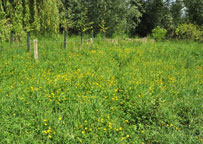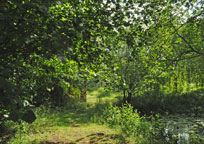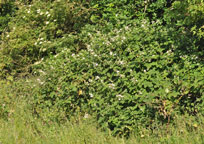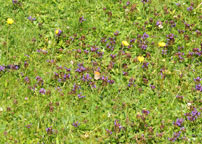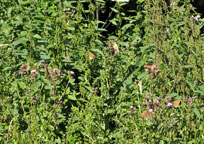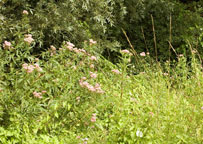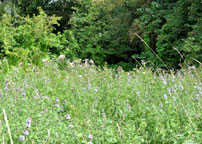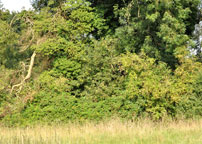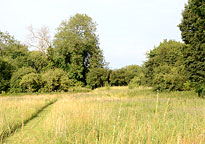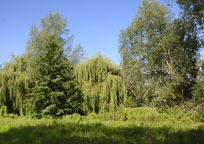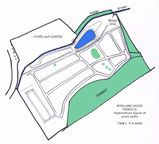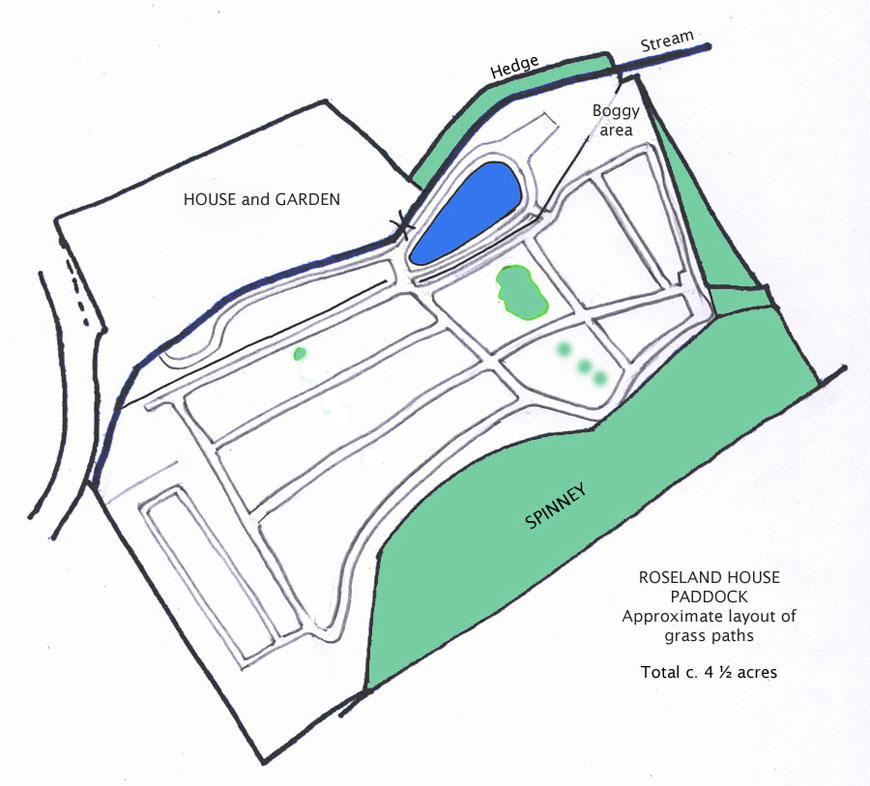Scrub/tree encroachment has been negligable and easily controlled. That is by mowing small areas next to Blackthorn hedge, or by hand trimming the odd tree seedling as it arises. The spread of the Bramble patches has to be limited by a combination of hand pruning and mowing paths round them.
Nectar plants: the best nectar plants are Sallow trees by the pond for bees and butterflies in March, Brambles in the hedges and Thistles for the main summer butterfly season followed by Knapweed and (in the swamp) Hemp Agrimony for later summer. There are also a few Buddlias and Ivy for autumn visitors.
Grassland species changes: the paddock is no longer a uniform mixture of species (if it ever was). In its uncut and ungrazed state various grass species have come to dominate different parts of the site. In some parts this has led to the gradual formation of a thick mat of dead grass left over from previous years, more suitable for rodents, beetles and the odd grass snake. This deep heavy soil will never be suitable for those dainty flowering plants of the chalk and sandy soils, though in the less lush parts there are areas of finer leaved grasses which be contributing to a small resident colony of Small Heath Butterlies. The Bedstraws and Cleavers are probable foodplants for the Common and Green Carpet Moths seen on the site.
As a trial in 2017 some selected areas were cut in Mid July, short enough to destroy the basal dead layers and then kept short for the remainder of that season. By summer 2018 it could be seen that apart from some reduction in the nettle patches (which was happening anyway) the 2017 cutting had made very little difference. A small increase in Spear Thistles in the cut areas was particularly appreciated by the Large Whites but the Cleavers which were swamping parts of the site continued to thrive before declining over the whole site, cut or uncut by 2021. Their rise and fall may have had more to do with the weather than anything else.
2019 was noticable for the final disappearance of most of the Creeping Thistle patches. This was disappointing as they had been a major nectar source in mid summer at the height of the butterfly season. They may have died of old age, though a gradual reduction in fertility from 25 years of natural leaching without added fertiliser may have played a part.
In spring the paths are cut above the level of the herbaceous rosettes (such as Cowslips) at about an inch high, then if it is a very dry late spring and summer, not cut so that the Buttercups, Knapweed etc can flower without being swamped by more vigourous grasses.
